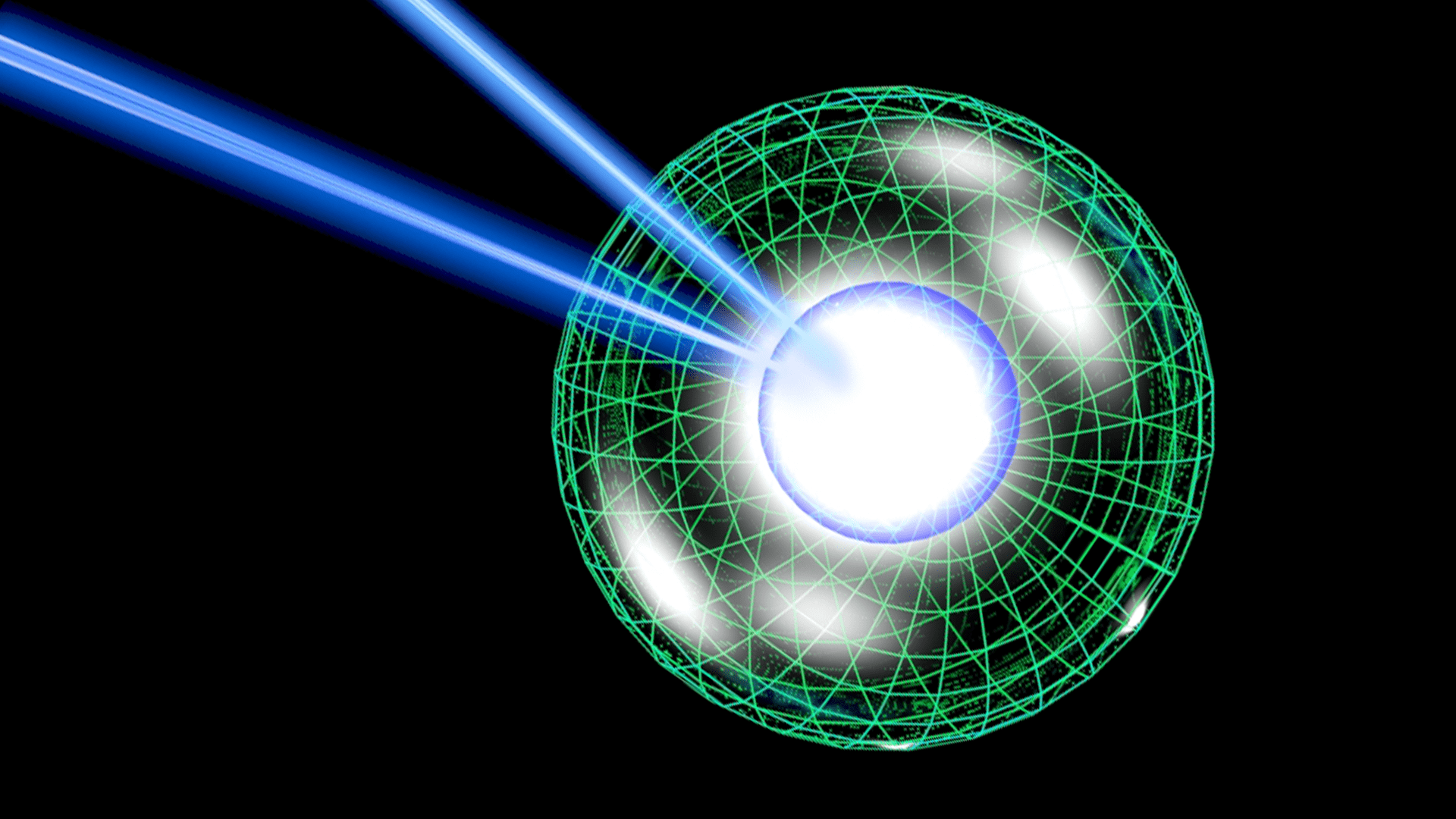
Artist’s impression of quantum illumination. A beam of light hits a remote object, and the object is detected through the reflected photons, which are particles of light. Figure credit: M. Gu.
Suppose you only have enough energy to produce a dozen photons — what can you use them to see? In a new theoretical paper, the ultimate detection limits imposed by the laws of quantum physics have been derived, solving a decade-old open problem in quantum theory.
Illumination first came to prominence in the development of radar systems during World War II, where microwaves were used to detect bombers and other incoming threats. Since then, radar and similar technologies have become indispensable to society, from weather forecasting to monitoring human breathing in medical settings. Meanwhile, the development of lasers led to the development of lidar (light detection and ranging), which is used by autonomous vehicles to detect obstacles.
Despite this long history, the theoretical underpinnings of illumination-based detection continues to hold surprises. In 2008, Professor Seth Lloyd of MIT proposed a new detection method called “quantum illumination”, which is based on quantum entanglement – the phenomenon of “spooky action-at-a-distance” that worried Einstein in the early days of quantum mechanics. Quantum illumination is potentially so efficient that it may be able to expose stealth technologies that had previously been considered secure. In 2018, CETC, one of China’s biggest defense companies, announced a prototype quantum radar which it claimed could use quantum entanglement to detect state-of-art stealth aircraft. A new quantum arms race was born.

In conventional illumination (left), we sense a remote object by bombarding it with “probe photons”. The object reflects some of the photons, and the reflected photons are picked up be a detector. In quantum illumination (right), we prepare a pair of entangle photons; one photon is held in reserve, and the other is sent to probe the object. Compared to conventional illumination, this technique can drastically enhance the chances of detecting the object.
But what are the ultimate limits in this arms race? Just as the conservation of energy in Newtonian physics imposes constraints on what is ultimately possible, quantum mechanics – the theory governing the behavior of all matter – must set certain fundamental limits on quantum detection methods.
In our new paper, which has just been published in the journal Optica, we derived some important new results about these limits.
We imagined a detector that contains a preset amount of energy, but has no other restrictions on how the object is illuminated, or how the reflected electromagnetic waves are processed. By optimising over an immense number of variables describing how such a detector can be designed, we were able to discover features that led to the derivation of certain simple but universal limits. These results also indicate that the best approach to quantum illumination is to spread the energy in the outgoing beam over time, rather than transmitting it in a short bright burst.
Our theoretical findings are significant for two reasons:
First, resources can be saved by knowing beforehand that certain approaches cannot work because they violate fundamental limits; by analogy, knowing about the second law of thermodynamics lets us avoid trying to engineer perpetual motion machines. Similarly, scientists and engineers working on quantum illumination methods can use our new results to weed out impossible schemes.
Second, knowing the limits of an adversary is crucial devising countermeasures. Our findings provide an ultimate limit that cannot be surpassed with even tomorrow’s technology – providing important clues towards the development of future-proof stealth technologies.
As a bonus, the limits that we derived can help to guide the design of new illumination schemes. One of our findings, for example, is that quantum limits can only be approached when one is able to operate on large swathes of reflected signals. This helps to pinpoint specific challenges that researchers will need to overcome in order to build the world’s most efficient detectors.
Reference:
Ranjith Nair and Mile Gu, Fundamental limits of quantum illumination, Optica 7, 771 (2020)
About the authors:
Mile Gu is a Nanyang Assistant Professor at the School of Physical and Mathematical Sciences, Nanyang Technological University, Singapore. He performs research at the interface between physics, computation, and complexity. Ranjith Nair is a Research Fellow at the School of Physical and Mathematical Sciences, Nanyang Technological University, Singapore, specializing in research on quantum imaging and metrology.
